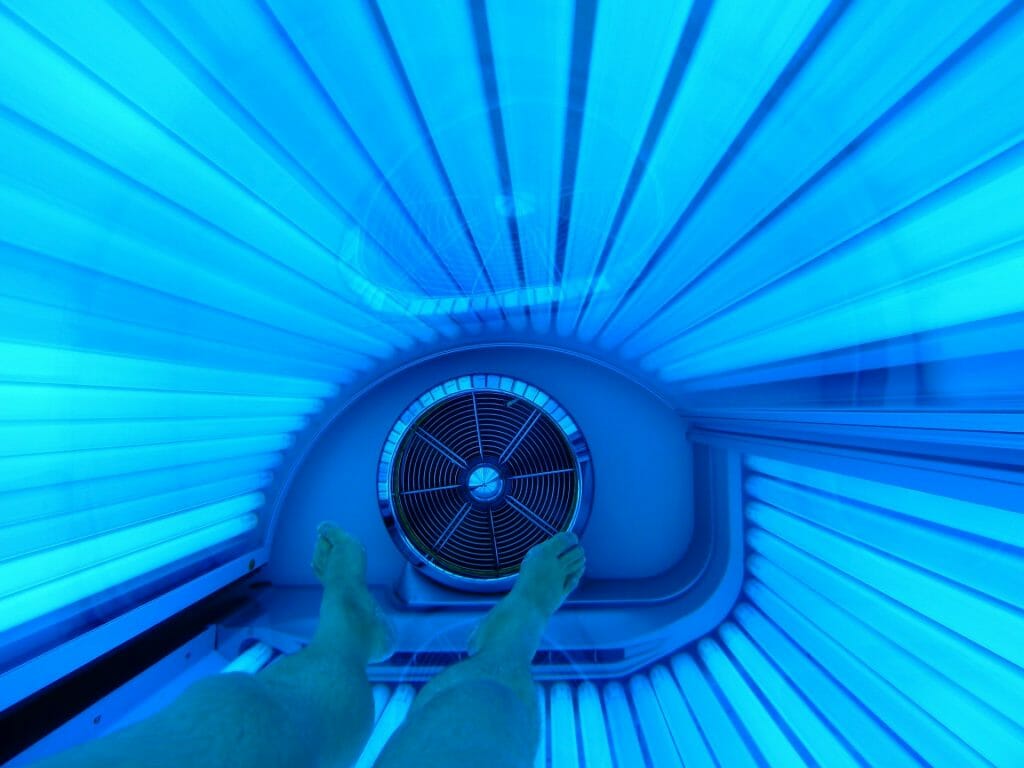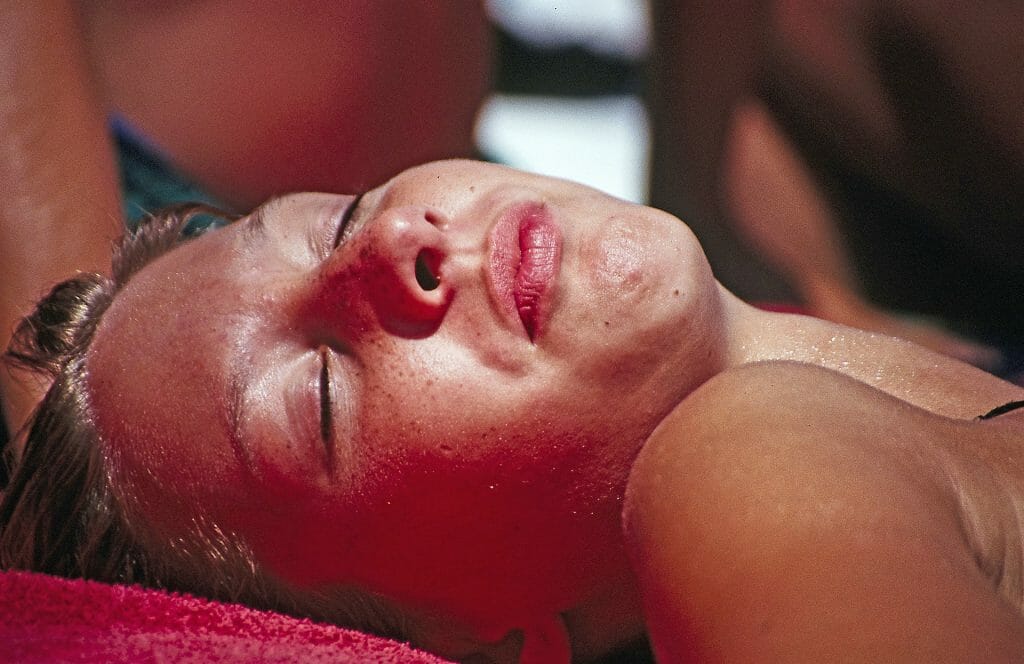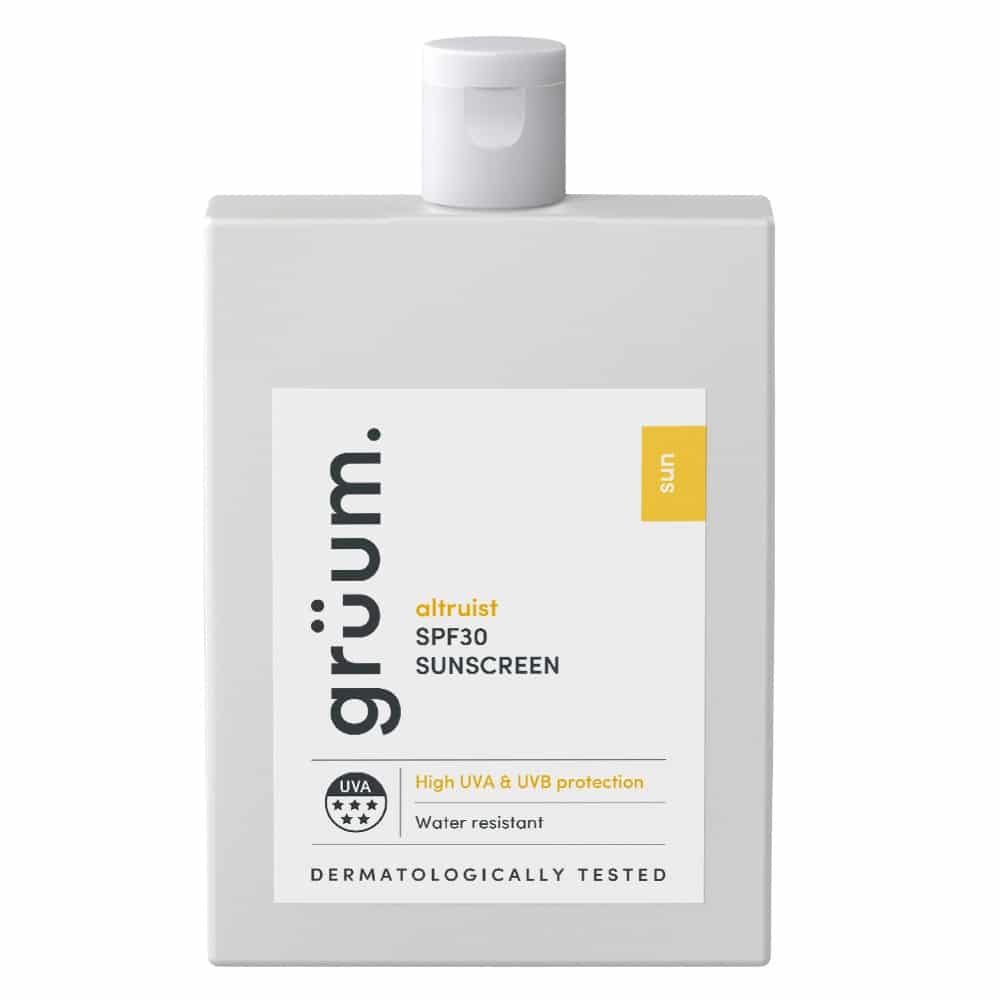At grüum, we’re all about “Happy Skin” and we firmly believe that people should be outside getting active, having fun outdoors and on their travels. But we also realise that happy skin is healthy skin, and the sun is the single biggest danger to our skin health. Those dangers come in a number of different ways, and our skin also has its own ways of telling us when it’s in danger. Some groups are more at risk than others and there’s also plenty of myths and legends out there about various dangers surrounding the sun and your skin.
In short, the sun poses dangers to us my exposing us to harmful UV rays, but we wanted to give you a thorough run down of the most common dangers the sun poses and how to tell if you’re at risk, along with busting some of the myths about safer sun.

Skin cancer
Sun exposure is the most common preventable cause of skin cancers in the UK. There are two types of skin cancer; melanoma, which are the most serious forms of skin cancer; and non-melanoma, which encompasses basal cell skin cancer and squamous cell skin cancer, and other rare forms. Instances are increasing dramatically – there were over 14,000 new melanoma cases last year alone and over 86% of those are linked to exposure to UV rays from sunlight and sunbed use. Skin cancer is also now the most common type of cancer. Enjoying the sun safely, and avoiding using sunbeds altogether can drastically reduce the risk of developing skin cancer of any type.
UV rays cause damage by altering the DNA cells of the skin. This is different from a burn you would get from touching a hot object – the heat from the sun comes from infrared rays which don’t harm you, UV rays cannot be felt which is why you can still burn on days when it feels quite cool. This also means that those changes to DNA cells can take place before we begin to feel any symptoms of sunburn. Our bodies try to repair as many of the DNA cells as possible, which is why sunburn feels hot and painful. Sometimes, our bodies fail to repair all of the damaged cells. These cells can then multiply and continue to mutate over many years, which can lead to developing skin cancer.
Skin ageing
Skin ageing is specifically caused by UVA rays, which deeply penetrate the skin. Whilst not as serious as other effects of the sun, a large number of visible ageing signs are caused by sun exposure. UVA rays change the texture and elasticity of the skin which can lead to premature wrinkling, a saggy and baggy look to the skin, and easy bruising. Various different pieces of research have indicated a strong correlation between sun exposure and apparent age, suggesting that sun exposure is responsible for 80% of visible signs of ageing. Comparative studies have looked at how the ages of identical twins with different sun-seeking habits are perceived, with results showing perceived age differences of up to ten years between twins, where one had approximately 10 hours more sun exposure per week than another.
As UVA rays are present all year round, using a good sunscreen with a good UVA protection rating all year round is really important for maintaining happy, healthy and youthful skin. Whilst a lot of daily moisturisers have an SPF, this doesn’t mean they offer protection against UVA rays and ageing, so make sure you use a product that does.
A tan means your skin is damaged!
A tan is essentially your skin’s way of telling you it has been damaged by the sun. It is a reaction to DNA damage in the skin and a sign that your body is trying to repair the damage. Whilst we may think that a tan gives us a healthy glow, it’s actually your body’s way of telling us to get out of the sun. When our bodies go into this protection mode, it distributes darker pigment cells to the surface of the skin. As the skin works more to protect itself from the sun, more of those pigments build up making us look more tanned. So whilst we may think it looks healthy, it’s actually a sign of quite the opposite.

Sunscreen myths
There’s also a lot of myths and legends circulating about certain elements of sun exposure that are good for you, and certain elements of sunscreen use that are bad for you. The first of these is that having a base tan will protect you, so you should take a few sessions on the sunbed in preparation for your holidays (please don’t do this, we promise it doesn’t work!). This myth comes from research that suggests a base tan offers an SPF of between 3 and 4, offering very, very little protection. To make sure you have a good base of protection, you’ll want to be using a sunscreen with an SPF of at least 15 and applying liberally throughout the day.
The second myth is that sunscreen itself can cause skin cancer. Some studies have indicated that people who have used sunscreens have a higher incidence of skin cancer, though these studies tend to involve people who have used sunscreen with an SPF that is lower than 15. Sunscreens with a lower SPF tend to be preferred by those who are using them to boost their tan, so potentially may have sought out the sun deliberately, or may have it was okay to spend longer in the sun owing to the fact they were wearing sunscreen – which is another myth to bust! There’s also some rumours that ingredients used in some sunscreens, such as octocrylene, are carcinogenic, however these are just rumours.

Who is most at risk?
Some groups of people are also more at risk of developing skin cancers than others. The British Association of Dermatologists has created a ‘Skindex’ which sets out genetic skin types and the risk they are at from UV damage. Type 6 is ‘black skin which very easily darkens on exposure to the sun and would rarely burn’, whilst Type 1 is ‘pale skin that burns very easily and rarely tans, often with red hair and freckles’. Those at the lower end of the spectrum are more at damage from UV rays and are more at risk of developing skin cancers. This is because people with fairer skin have different types of, and differently structured, melanin to people with darker skin.
There are other contributing factors too. The amount of sun exposure you have can also increase the risk of skin cancer in a few different ways; if you have had lots of exposure through work or an outdoor hobby, you have an increased risk of developing squamous cell skin cancer. People who were sunburnt several times is in childhood also have an increased risk of skin cancers, so it’s really important to protect children and yourself if you know that you experienced sunburn when you were younger.
There is also a lot of research which shows a significant link between sunbed use and melanoma. Many sunbeds give out higher doses of UV rays than the sun when it is at its hottest, despite common misconceptions about sunbed use being safer than sun tanning. There is also an increased risk as short period of intense and irregular UV exposure can additionally damage your skin. Sunbed use also contributes towards ageing factors and can make your skin look wrinkled, older, or leathery.
Where you were born also makes a difference. Fair-skinned people who were born in hot countries have an increased risk of melanoma compared against those who move to those countries as teenagers or older, or have similar skin colouring and live in cooler countries. Socioeconomic status also plays a role; people with a higher socioeconomic status are more at risk of developing melanoma, which has been potentially put down to the fact that they can generally afford to take more holidays.
These are just a few of the risks involved with spending time in the sun. Nobody is completely free from risk, and the easiest way of reducing your risk is by enjoying the sun safely by using sunscreen correctly.
What do I need to keep an eye out for?
You know your skin better than anyone else. If you fall into any of the at-risk groups and feel something isn’t right, then go and see your GP. With melanoma, the telltale sign is unusual moles or skin lesions that have changed. Unusual moles are ones that are bleeding, itchy, an odd shape or colour, raised or larger than usual. In men, melanomas are most common on the back so it’s important to make sure this area is checked, whereas for women melanomas occur most commonly on the legs.
For non-melanoma cancers, Cancer Research UK recommends that you see a doctor if you have any spots or ulcers that haven’t healed over a four week period. You should regularly check any areas that are exposed to the sun. In both cases, the earlier the cancer is found, the easier it is to treat so it’s really important to regularly check your skin.

Give yourself the best protection possible with grüum and Altruist
Altruist Dermatologist Sunscreen has been developed by consultant dermatologist and skin cancer surgeon Dr Andrew Birnie in conjunction with some of Europe’s leading formulation scientists. Their mission is to reduce the incidence of skin cancer through increasing use of quality sunscreen, along with better education and awareness.



